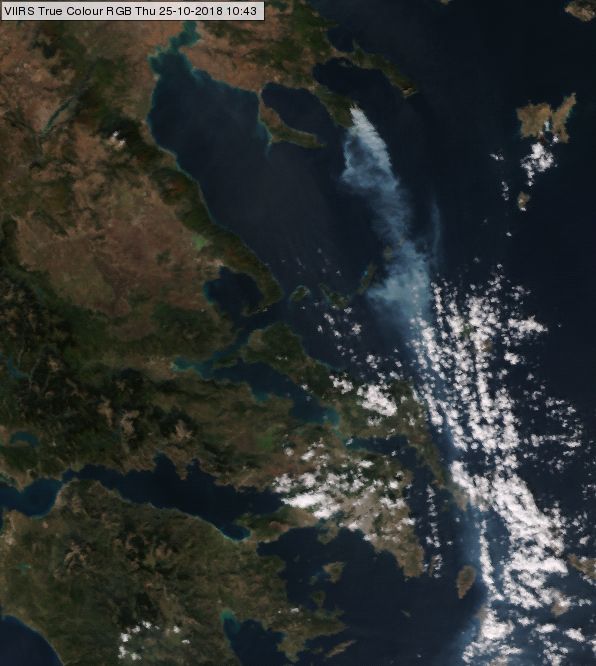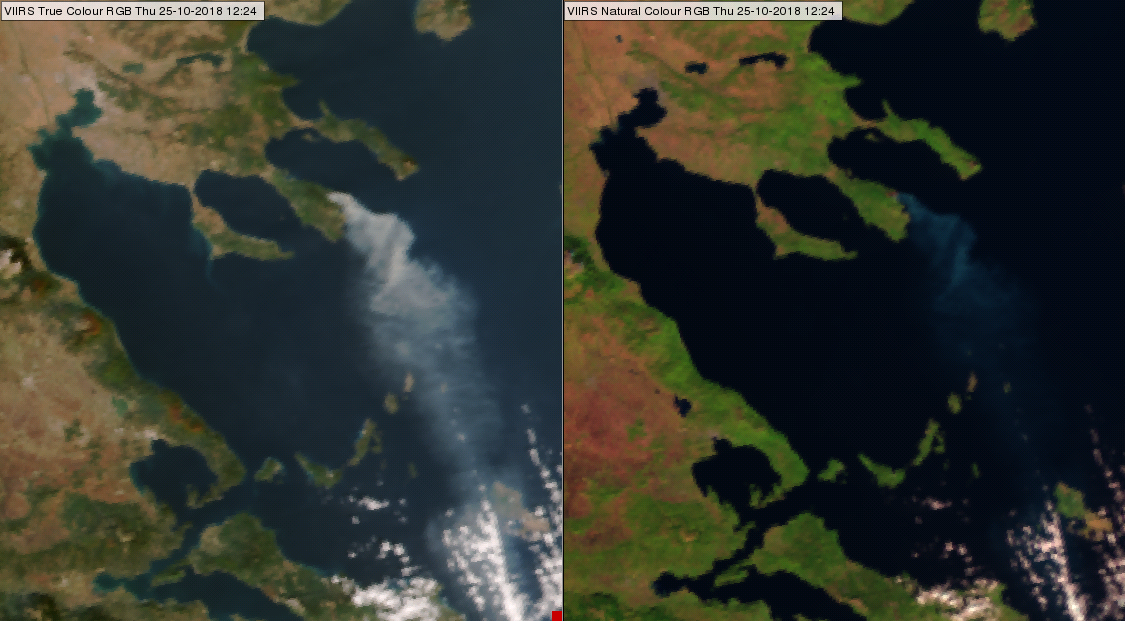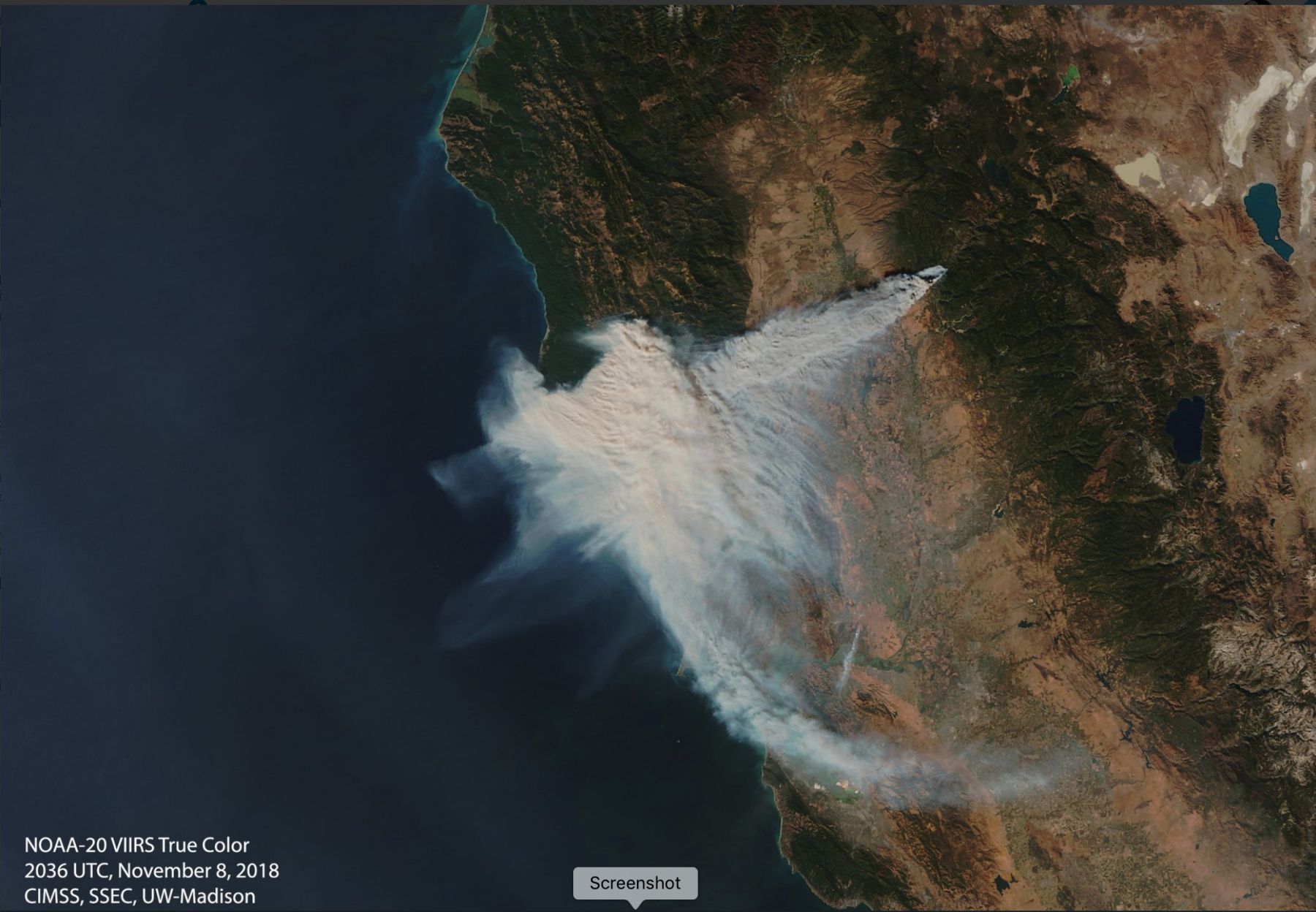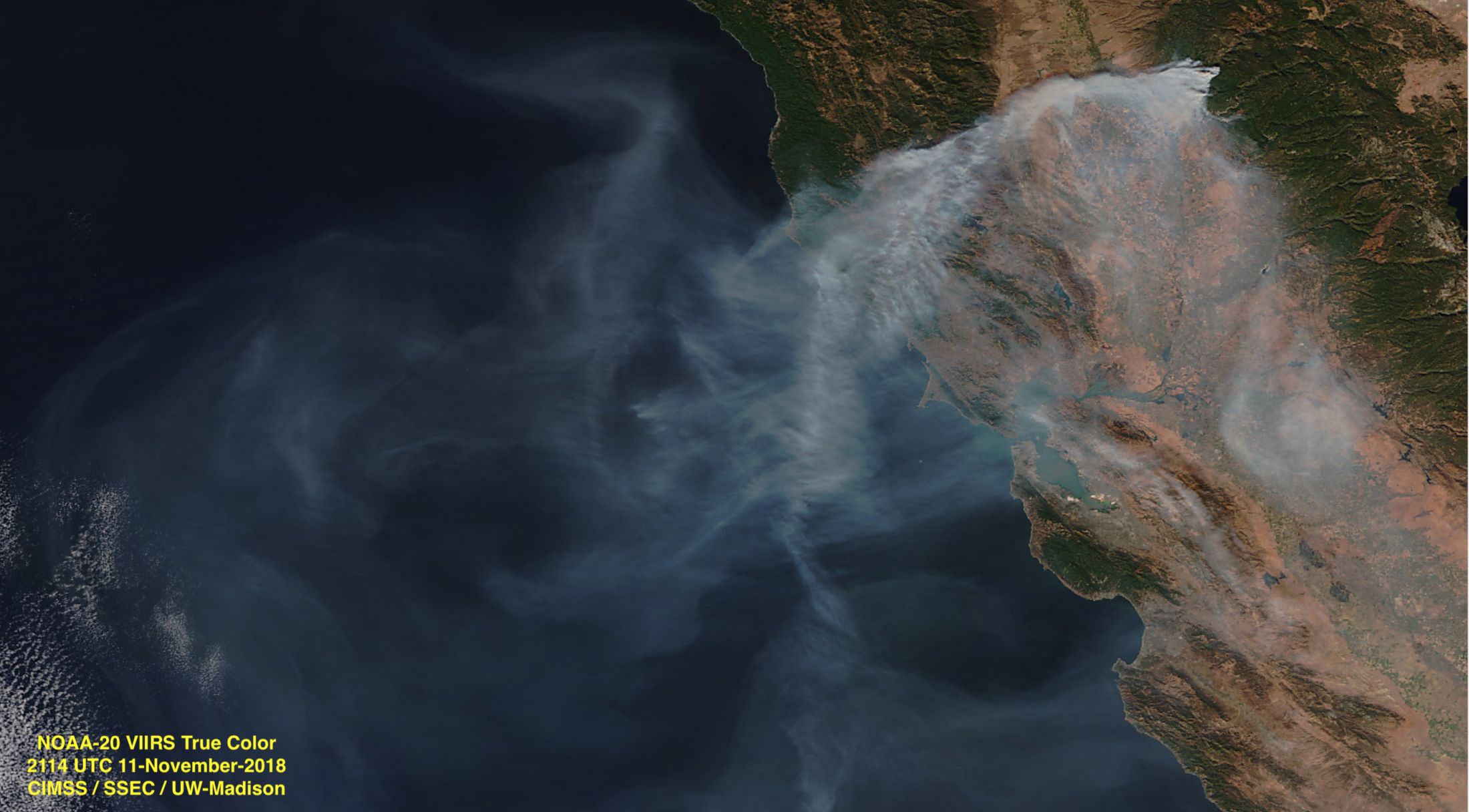bluish grey
Smoke plumes from burning biomass usually appear bluish grey or grey in the VIIRS True Colour RGB images. The smoke of an oil fire is black.
True Colour RGB images are ‘Rayleigh corrected’. This means that the impact of Rayleigh scattering by atmospheric molecules has been removed to make the images clearer. However, the impact of the aerosols’ scattering is not removed completely. This is one of the strengths of the True Colour RGB: it is quite sensitive to particulate matter in the atmosphere like smoke, smog, haze and dust.
A thick smoke plume close to the source has a different shape, structure and colour shade than ice and water clouds. A very thin smoke plume, further from its source area, or a residual thin smoke plume of a former fire often resembles a blurred (bluish) greyish veil. Its detection is easier against a dark background like the sea.
The image below shows a smoke plume over the Aegean Sea.

NPP, VIIRS True Colour RGB for 25 October 2018, 10:43 UTC
The image below shows the smoke of the same fire one and half hour later. Both, the True Colour and the Natural Colour RGB images are shown to demonstrate how much more sensitive the True Colour RGB is in respect to the smoke.

NPP, VIIRS True Colour RGB (left) and Natural Colour RGB (right) for 25 October 2018, 12:24 UTC
The following two images show the smoke of the wildfire which devastated in Northern California in November 2018 during several days. True Colour RGB imagery from VIIRS provides good view of the smoke. The image of 8 November shows (mainly) thick smoke. Here thick smoke appears grey with weak brownish shades, thin smoke appears bluish grey.

NOAA-20, VIIRS True Colour RGB for 8 November 2018, 20:36 UTC
(Source: https://cimss.ssec.wisc.edu/goes/blog/archives/category/air-quality)
The image below shows the smoke 3 days later. Here we can see mostly thin smoke in bluish grey shades.

NOAA-20, VIIRS True Colour RGB for 11 November 2018, 21:14 UTC
(Source: https://cimss.ssec.wisc.edu/goes/blog/archives/category/air-quality)
Note that:
• The aerosol plumes usually appear grey in the True Colour RGB images. The grey shade may indicate the type of the aerosols. Biomass smoke is often bluish grey, the smoke of oil fire is black, dust cloud is often brownish grey, while haze appear grey.
• Towards the edge of the swath a thin smoke plume appears thicker, while along the sub-satellite track it looks thinner.
• Thin clouds also appear greyish.
Explanation of the colour of smoke in the True Colour RGB imgages (see the recipe):
The aerosol particles scatter the visible radiation. The reflectivity of a thick aerosol plume depends on its concentration, the type of aerosol (its composition), the average particle size, the solar and the satellite viewing angles and on the wavelength.
The colour of the smoke depends strongly on the burning material. The smoke of an oil fire is black because of the large concentration of highly absorbing soot particles. The smoke of a pure biomass fire is grey or bluish grey as the particles are not too large and the absorption of the smoke particles is much lower.
In case of a thin smoke plume the measured radiance depends on the characteristics/reflectivity of the underlying surface as well. The satellite observes a combined signal from:
• Radiation scattered by the smoke particles into the direction of the satellite sensor and
• Radiation transmitted through the thin smoke plume in the direction of the satellite sensor.
The weighting factor of the combination depends on the smoke plume transmissivity.

